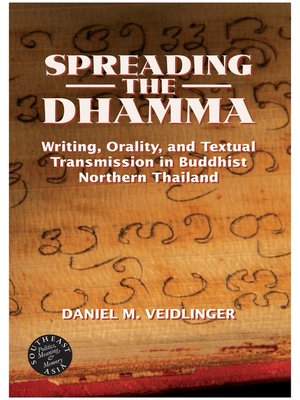Spreading the Dhamma
ebook ∣ Writing, Orality, and Textual Transmission in Buddhist Northern Thailand · Southeast Asia: Politics, Meaning, and Memory
By Daniel Veidlinger

Sign up to save your library
With an OverDrive account, you can save your favorite libraries for at-a-glance information about availability. Find out more about OverDrive accounts.
Find this title in Libby, the library reading app by OverDrive.



Search for a digital library with this title
Title found at these libraries:
| Library Name | Distance |
|---|---|
| Loading... |
How did early Buddhists actually encounter the seminal texts of their religion? What were the attitudes held by monks and laypeople toward the written and oral Pali traditions? In this pioneering work, Daniel Veidlinger explores these questions in the context of the northern Thai kingdom of Lan Na. Drawing on a vast array of sources, including indigenous chronicles, reports by foreign visitors, inscriptions, and palm-leaf manuscripts, he traces the role of written Buddhist texts in the predominantly oral milieu of northern Thailand from the fifteenth to the nineteenth centuries.
Veidlinger examines how the written word was assimilated into existing Buddhist and monastic practice in the region, considering the use of manuscripts for textual study and recitation as well as the place of writing in the cultic and ritual life of the faithful. He shows how manuscripts fit into the economy, describes how they were made and stored, and highlights the understudied issue of the "cult of the book" in Theravâda Buddhism. Looking at the wider Theravâda world, Veidlinger argues that manuscripts in Burma and Sri Lanka played a more central role in the preservation and dissemination of Buddhist texts.
By offering a detailed examination of the motivations driving those who sponsored manuscript production, this study draws attention to the vital role played by forest-dwelling monastic orders introduced from Sri Lanka in the development of Lan Na's written Pali heritage. It also considers the rivalry between those monks who wished to preserve the older oral tradition and monks, rulers, and laypeople who supported the expansion of the new medium of writing.







